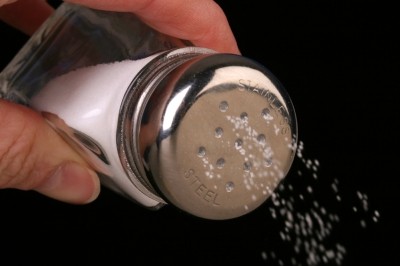Encapsulation may allow 50% salt reduction in breads

An uneven distribution of salt capsules ranging in size from 1000 to 2000 micrometers allowed researchers to develop bread with 50% less salt but with no impact on the perceived saltiness and liking by consumers.
Scientists from TI Food & Nutrition, TNO, NIZO food research, and Wageningen University report their findings in the Journal of Cereal Science.
Salt
Salt is of course a vital nutrient and is necessary for the body to function, but the average daily salt consumption in the western world, between 10 and 12g, vastly exceeds recommendations from WHO/FAO of 5 grams per day to control blood pressure levels and reduce hypertension prevalence and related health risks in populations.
And with 80 per cent of salt intake coming from processed foods, many countries have initiated salt reduction program, with many holding up the UK’s Food Standards Agency as the torch bearer for national initiatives.
The benefits of a salt global salt reduction strategy were given blinding clarity by a meta-analysis published in The Lancet Chronic Diseases Series in 2007, which concluded that reducing salt intake around the world by 15 per cent could prevent almost nine million deaths between 2006 and 2015.
The topic remains controversial, however, with a prestigious Cochrane review concluding that salt reduction did not impact cardiovascular disease risk. However, this was subsequently slammed in a re-analysis of the same data in The Lancet, with the authors of this paper stating that salt reduction does provide a significant reduction in cardiovascular events.
Continuing efforts
Regardless of this ongoing debate, public health policy in many continues to advocate salt reduction, and the food industry continues to explore ways of reducing the salt content of its products without detrimentally affecting consumer liking.
The new study taps into just that, with the application of a technological approach to reduce the salt content in bread. Led by TI Food & Nutrition’s Martijn Noort, examined the effects of non-homogenous distribution of encapsulated salt in a bread product.
Results showed that the average saltiness of bread formulated with large salt encapsulates at a level of 1% were “equal or higher” than breads prepared with normal salt at a level of 2%.
In addition, Noort and his co-workers report that small encapsulates, unlike the larger encapsulated, did not produce large sensory contrasts and breads formulated with particles between 1000 and 2000 micrometers “are expected to allow for a salt reduction of at least 50% while retaining or even elevating consumer liking of bread.
“The results of this study show that sensory contrast is a technology to modulate taste perception and to create sodium reduced products while retaining their saltiness intensity and consumer liking,” they concluded.
Source: Journal of Cereal Science
Volume 55, Issue 2, Pages 218-225, doi: 10.1016/j.jcs.2011.11.012
“Saltiness enhancement by taste contrast in bread prepared with encapsulated salt”
Authors: M.W.J. Noort, J.H.F. Bult, M. Stieger










